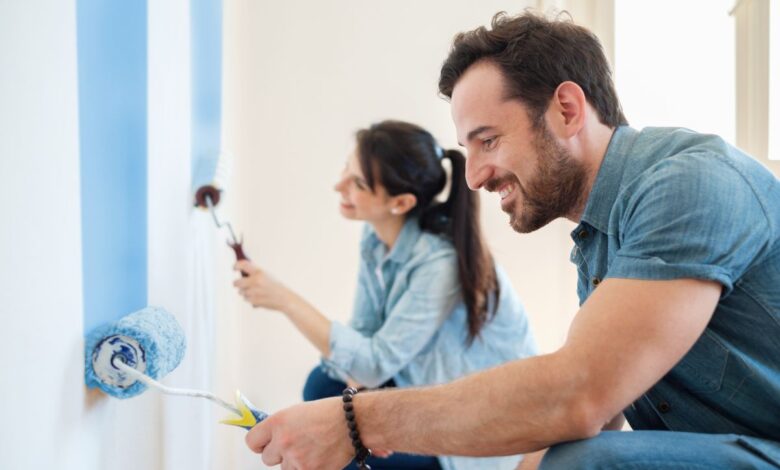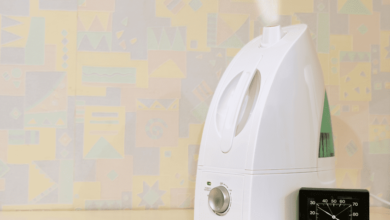Why And How To Learn Painting Your Home Yourself

Your home will need painting at some point to boost the overall aesthetics of your property. There are many instances where the painting is required, for instance, when moving into a new home, when your walls appear dull, or when planning to auction your home and want it to look as fresh as possible. With all these painting scenarios, learning how to paint is important to enjoy the benefits of painting your own home.
This article outlines why you should learn to paint your home and a step-by-step guide on how to paint your house.

Why Should You Learn Painting Your Own Home?
While hiring a professional painter for good results is advisable, you can also opt to paint the house yourself. If you have the right skills, painting isn’t a complex task. However, the task can become a mess if you’re not careful. Fortunately, Certificate III in painting and decorating will help make you a qualified painter without errors. There are many reasons to paint your own home; they include the following:
-
Save on Labor Costs
Not incurring labor costs is the most obvious benefit of painting your own home. This is because you won’t hire a professional to do the task. Hiring professional painters is costly because of their experience and the equipment used. Although you’ll incur a few expenses on the painting supplies and tools, you’ll save more money doing the task yourself. Therefore, you may want to do the next painting project yourself to save money. For more effective results, consider going through various tutorials and instructions online.
-
Increased Flexibility
Painting your home yourself allows you to enjoy a bit of flexibility because you can do the job at any time in any manner you want. For instance, you can break the project into small steps and perform each step at your convenient time. Additionally, you have control over the final touch when doing it yourself. This isn’t the case when you hire a professional who performs the task according to their expertise and schedule.
-
Beneficial to Your Health
This is the most overlooked benefit of painting your home by yourself. Painting is a form of art therapy that can help with mental and physical illnesses. When you focus and concentrate on painting, your body experiences a reduction in cortisol levels. Cortisol is a hormone produced by the adrenal glands and is essential in regulating how your body responds to stress. The more cortisol hormones you have, the more stressed you become, while a reduction in cortisol levels reduces stress.
How To Paint Your Home Yourself
Painting isn’t difficult and doesn’t require extensive specialized training. Anyone can paint a house; you only need a little practice and the right instructions. To start painting, you’ll need first to acquire all the tools and materials required for the task, including paint, primer, paint roller, paint brushes, drop cloths, paint tray, painter’s tape, and sandpapers. Now that you have all the requirements, follow the following steps for effective painting:
-
Prepare the Surface
To effectively paint your walls, start by preparing the surfaces to be painted. This means removing any loose or peeling paint using a scraper or sandpaper. Then sand the surfaces to make them smooth so that the new paint can adhere. Scrub the surfaces using a mild detergent and a drop cloth to remove all the dirt. Finally, rinse the surface and wait for it to dry.
-
Tape the Trim
After preparing your walls, use painter’s tape to cover the trim so you can paint cleanly and in sharp lines. A painter’s tape guarantees that you paint in a straight line. It also helps protect painted surfaces from runs and drips.
-
Apply the Primer
Applying a primer is necessary when painting any type of wall. Primer helps block stains, allows minimal paint coverage, and improves paint adhesion. To apply the primer, start by pouring the primer into a paint tray and, using a painting roller, paint your wall from the top downwards. Apply the primer to the ceiling and corners using a brush and wait for it to dry before painting.
-
Paint Your Walls
Before starting to paint your walls, ensure to stir your paint and keep re-stirring it throughout the project to prevent its ingredients from separating. After you mixed your paint evenly, choose a strategy you’ll use. The trick is to start with your ceiling going downward and tackle one wall at a time. If you’re using a painting roller, use W patterns for a larger coverage and to avoid roller marks. Once you’re done, wait for the walls to dry and apply a second coat.
-
Clean Up
After painting multiple coats, remove all the painter’s tape carefully. If you use latex and water-based paints, clean your tools using soapy water, but if you use oil-based paints, use mineral spirits.
Conclusion
Whether you’re painting a single wall or your entire house, you can save more when you do it yourself. Doing this can also help you freshen up and beautify the look of your home without spending too much money. Therefore, follow the above painting steps to tackle your next painting project.




